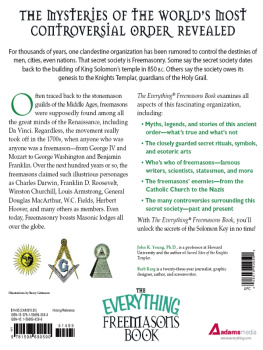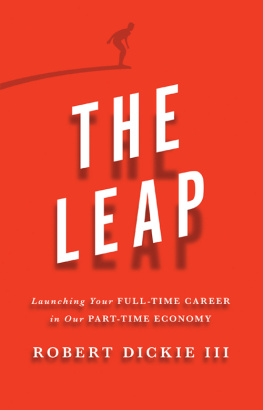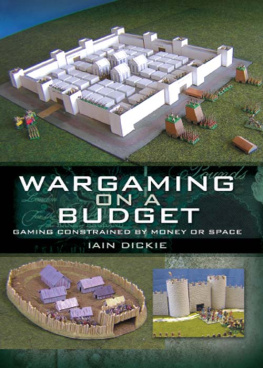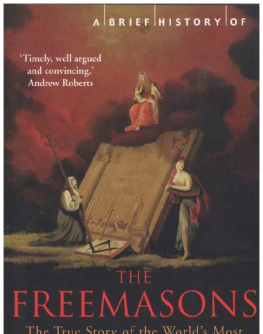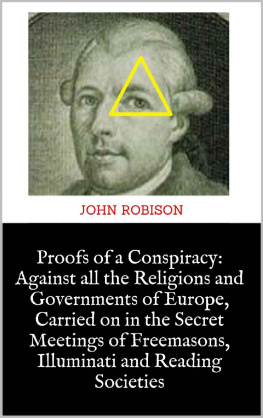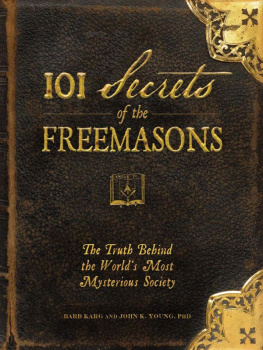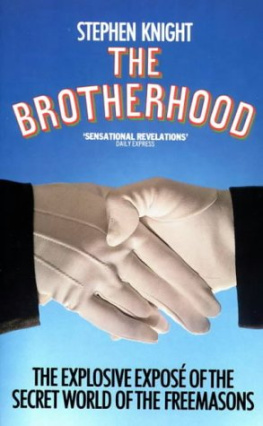John Dickie - The Craft: How Freemasons Made The Modern World
Here you can read online John Dickie - The Craft: How Freemasons Made The Modern World full text of the book (entire story) in english for free. Download pdf and epub, get meaning, cover and reviews about this ebook. year: 2020, publisher: PublicAffairs, genre: Religion. Description of the work, (preface) as well as reviews are available. Best literature library LitArk.com created for fans of good reading and offers a wide selection of genres:
Romance novel
Science fiction
Adventure
Detective
Science
History
Home and family
Prose
Art
Politics
Computer
Non-fiction
Religion
Business
Children
Humor
Choose a favorite category and find really read worthwhile books. Enjoy immersion in the world of imagination, feel the emotions of the characters or learn something new for yourself, make an fascinating discovery.

- Book:The Craft: How Freemasons Made The Modern World
- Author:
- Publisher:PublicAffairs
- Genre:
- Year:2020
- Rating:3 / 5
- Favourites:Add to favourites
- Your mark:
- 60
- 1
- 2
- 3
- 4
- 5
The Craft: How Freemasons Made The Modern World: summary, description and annotation
We offer to read an annotation, description, summary or preface (depends on what the author of the book "The Craft: How Freemasons Made The Modern World" wrote himself). If you haven't found the necessary information about the book — write in the comments, we will try to find it.
The Craft: How Freemasons Made The Modern World — read online for free the complete book (whole text) full work
Below is the text of the book, divided by pages. System saving the place of the last page read, allows you to conveniently read the book "The Craft: How Freemasons Made The Modern World" online for free, without having to search again every time where you left off. Put a bookmark, and you can go to the page where you finished reading at any time.
Font size:
Interval:
Bookmark:
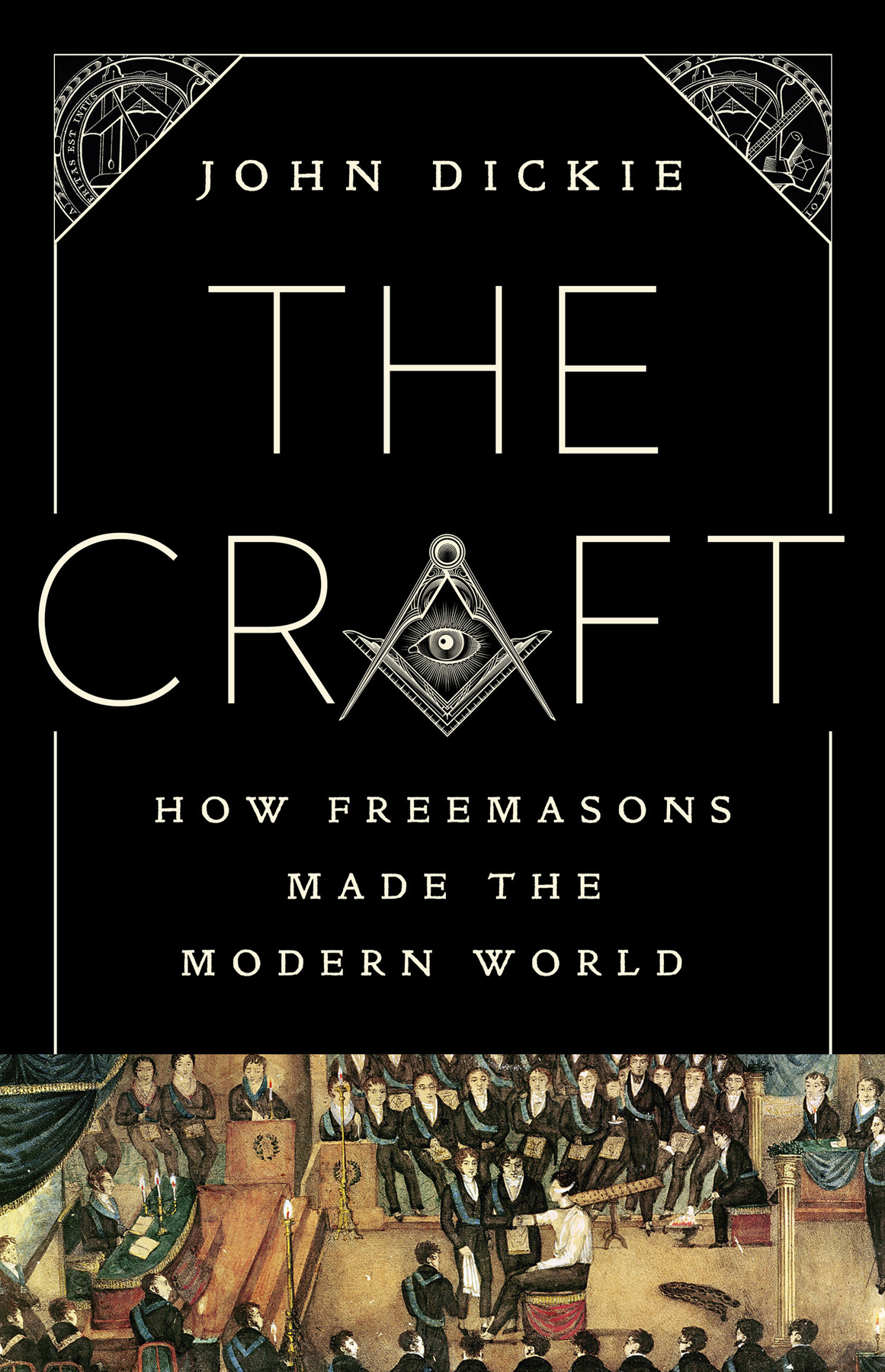
Copyright 2020 by John Dickie
Cover design by Pete Garceau
Jacket illustration of Masonic initiation ceremony Muse de la Franc-Maconnerie, Paris, France, Archives Charmet/Bridgeman Images
Cover copyright 2020 by Hachette Book Group, Inc.
Hachette Book Group supports the right to free expression and the value of copyright. The purpose of copyright is to encourage writers and artists to produce the creative works that enrich our culture.
The scanning, uploading, and distribution of this book without permission is a theft of the authors intellectual property. If you would like permission to use material from the book (other than for review purposes), please contact permissions@hbgusa.com. Thank you for your support of the authors rights.
PublicAffairs
Hachette Book Group
1290 Avenue of the Americas, New York, NY 10104
www.publicaffairsbooks.com
@Public_Affairs
Originally published in Great Britain in 2020 by Hodder & Stoughton, a Hachette UK company
First US Edition: August 2020
Published by PublicAffairs, an imprint of Perseus Books, LLC, a subsidiary of Hachette Book Group, Inc. The PublicAffairs name and logo is a trademark of the Hachette Book Group.
The Hachette Speakers Bureau provides a wide range of authors for speaking events. To find out more, go to www.hachettespeakersbureau.com or call (866) 376-6591.
The publisher is not responsible for websites (or their content) that are not owned by the publisher.
Typeset in Sabon MT by Palimpsest Book Production Ltd, Falkirk, Stirlingshire
Library of Congress Control Number: 2020934569
ISBNs: 978-1-61039-867-1 (hardcover) 978-1-5417-2467-9 (ebook)
E3-20200730-JV-NF-ORI
For Iris, Charlotte and Elliot
On 14 March 1743, as he was leaving a Lisbon coffee house, John Coustos, a forty-year-old jeweller from London, was grabbed, handcuffed and bundled into a chaise. A short time later, he found himself in one of the most feared buildings in Europe. Looming at the northern end of Rossio Square, the Estaus Palace housed the Portuguese headquarters of the Holy Office of the Inquisition.
Just like hundreds of witches, heretics and Jews who had been brought there before him, Coustos had his scalp shaved, and was stripped naked save for his linen undergarments. Confined in a dungeon, he was subjected to a meticulous regime. Isolation and silence were rigidly enforced: a fellow prisoner with a persistent cough was cudgelled into unconsciousness. No communication with friends and relatives was permitted. No possessions. No booksnot even a Bible. Nothing that would interrupt the voice of divine conscience. Nothing to block out the prisoners all too vivid imagining of the horrors that awaited him in the Inquisitions auto-da-f. This grand spectacle of religious justice was a procession culminating in prayers, incantations and public execution by one of two methods: the mercy of strangling, for those who embraced the Catholic faith at the last minute; and for the obstinate, the unutterable torment of the flames.
Coustos tells us that the Inquisitors initially questioned him in a spiritually nurturing tone. Nonetheless, he had the clear sense that his replies were futile. Eventually he was summoned from his cell and brought before the President of the Holy Office, who read out the charges as if talking to a wall:
That he has infringd the Popes Orders, by his belonging to the Sect of the Free-Masons; this Sect being a horrid Compound of Sacrilege, Sodomy, and many other abominable Crimes; of which the inviolable Secrecy observd therein, and the Exclusion of Women, were but too manifest Indications; a Circumstance that gave the highest Offence to the whole Kingdom: And the said Coustos having refused to discover, to the Inquisitors, the true Tendency and Design of the Meetings of Free-Masons; and persisting, on the contrary, in asserting, that Free-Masonry was good in itself: Wherefore the Proctor of the Inquisition requires, that the said Prisoner may be prosecuted with the utmost Rigour; and, for this Purpose, desires the Court would exert its whole Authority, and even proceed to Tortures.
Coustos was taken to a square, windowless room in a tower. Quilted padding lined the door, to deaden the sound of screaming from within. A doctor and a surgeon looked back at him from the shadows. The only light came from two candles on the desk at which the Tribunals secretary sat waiting to record his confession.
Four burly men seized him and clamped him to a horizontal rack by closing an iron collar around his neck. They fitted rings, with ropes attached, to his feet, and yanked his limbs to their fullest extent. Then eight loops of cord, two over each arm and two over each leg, were passed through the frame and fed out into the torturers hands. Coustos felt the cords tighten, and tighten, and finally start to saw through his flesh. Blood spattered the floor beneath him. If he died in this torment, he was told, only his own obstinacy would be to blame. Between his own cries, he heard the Inquisitor pose the questions he had already heard many times. What is Freemasonry? What are its constitutions? What goes on in the Lodge meetings? Eventually, he fainted and was carried back to the dungeons.
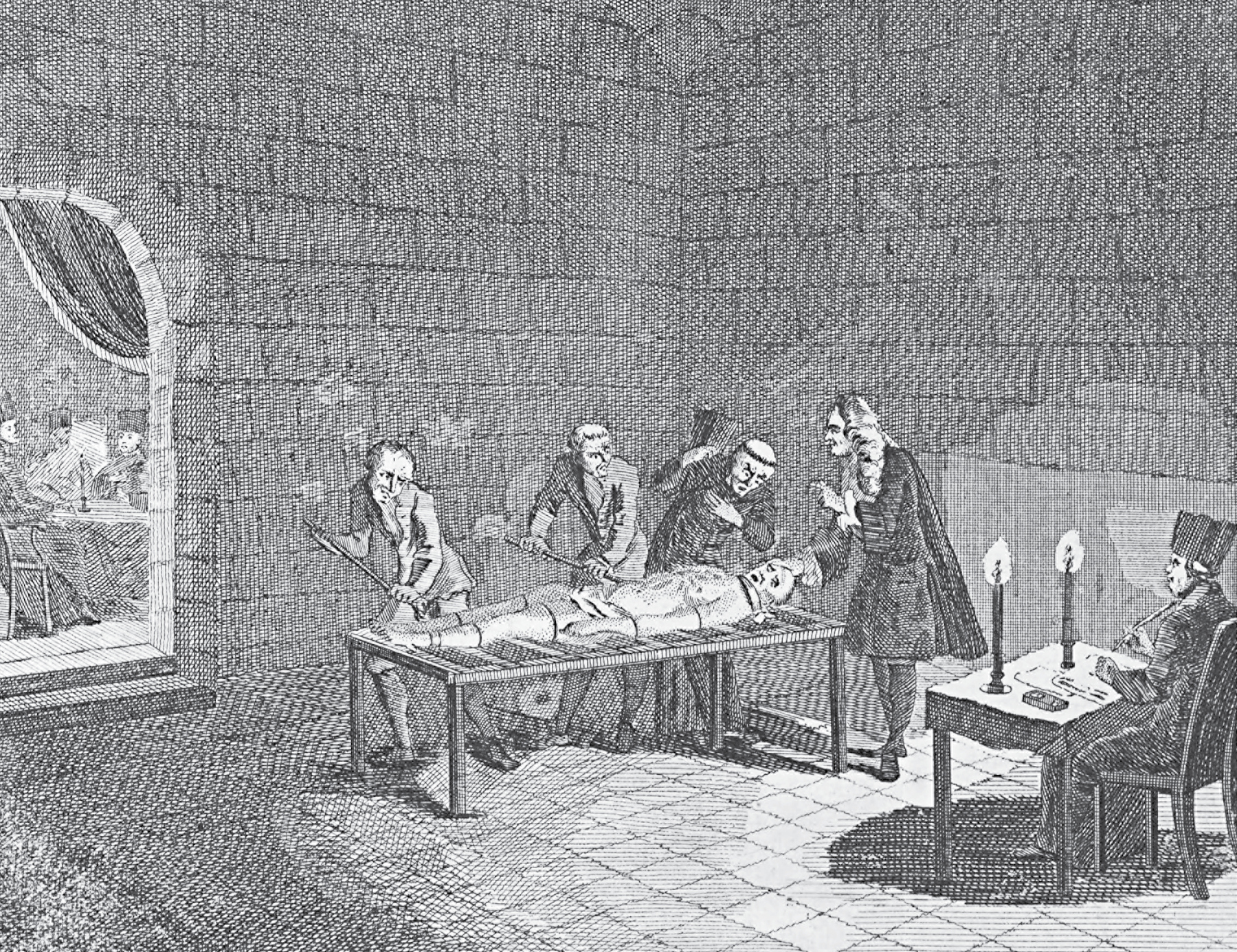
Six weeks later, the Inquisitors tried again, with a different method: the dreaded strappado. Upright this time, Coustos had his arms gradually stretched back behind him, palms facing outwards, until the backs of his hands met. Then his arms were pulled slowly upwards until his shoulders were levered from their sockets, and blood poured from his mouth. As he beseeched heaven for patience, the Inquisitors persisted with their questions. Is Freemasonry a religion? Why do you not admit women? Is it because you are sodomites?
When the doctors had reset his bones, and he had spent two months recovering, the torture resumed. This time, a chain was wound around his torso and attached to his wrists. Pulleys drew the chain ever tighter, squeezing his insides, and dislocating his wrists as well as his shoulders. Why all the secrecy in Freemasonry? What do you have to hide?
Coustos tells us that he spent sixteen months in total in the dungeons of the Estaus Palace, and endured nine bouts of torture, before the time finally came for him to be paraded through the streets in the auto-da-f of 21 June 1744. But he was lucky. While eight of his fellow prisoners were burned alive at the climax of the procession, he was condemned to four years as a galley slave. The relative freedom this sentence afforded gave him the chance to contact friends, who mobilised the British government to obtain his release.

When he reached London on 15 December 1744, he set to writing his story. But he had barely begun when the Jacobite rebellion of 1745 broke out. Bonnie Prince Charlie Stuart raised his standard in the Highlands of Scotland, intent on enforcing his Catholic claim to the throne that had once been his grandfathers. The Jacobite army descended as far as Derby, in the heart of England, sowing panic in the capital. Although it was eventually crushed, the rebellion revived the public appetite for books documenting the barbarities of the Roman Church. The Sufferings of John Coustos for Free-Masonry
Font size:
Interval:
Bookmark:
Similar books «The Craft: How Freemasons Made The Modern World»
Look at similar books to The Craft: How Freemasons Made The Modern World. We have selected literature similar in name and meaning in the hope of providing readers with more options to find new, interesting, not yet read works.
Discussion, reviews of the book The Craft: How Freemasons Made The Modern World and just readers' own opinions. Leave your comments, write what you think about the work, its meaning or the main characters. Specify what exactly you liked and what you didn't like, and why you think so.

